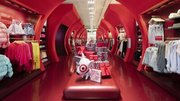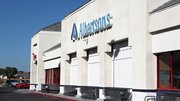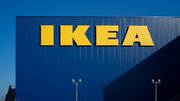Article
How to create immersive in-store experiences with directional audio
Combining directional audio with digital signage offers an entirely new dimension to customer engagement.

September 18, 2014
Audio clearly has a significant role to play in a retail environment. A 2007 study published in the European Journal of Scientific Research Journal found that playing music in a retail setting resulted in customers staying longer and spending slightly more than when no music was played.
In addition, a 1999 study by professors at the University of Leicester in the U.K. found that when alternating the type of music played in a supermarket’s wine section the sale of French wine would increase when French music was played while the sale of German wine would increase when German music was played.
So if simply playing random music in the background can result in increased dwell time and higher sales, it stands to reason that targeted use of directional audio can lead to even more significant results.
Although the use of directional audio in a retail setting is still in its relative infancy, several academic research studies already show its potential. One of those, a 2012 study conducted by professors at the University of Stockholm, sought to determine whether the use of directional audio could result in consumers choosing organic products over non-organic ones. When standing in the store’s dairy section, shoppers heard the sound of farm animals while a female narrator talked about the various benefits of organic products.
The study found that shoppers exposed to directional audio stayed in the dairy section 15 seconds longer than those not exposed to directional audio (55.5 seconds versus 40.5 seconds), and sales of the products touted by directional audio rose nearly 10 percent compared with sales of those same products prior to installation of the system.
Another 2012 study, one conducted at Swedish retailer ICA, came to even more dramatic conclusions. That study found that sales of two well-known beverage products rose nearly 60 percent during an advertising campaign incorporating directional audio.
In addition, the study found that directional audio achieved greater results in larger stores, as shoppers in those stores were more likely to make impulse purchases, and that the greatest sales increases were achieved when the audio content matched the product being promoted. Audio content that did not match the product being marketed did not result in a significant difference in sales.
By using directional audio retailers can create an immersive 3D sound environment confined to a specific area, such as in front of a target display or self-order kiosk. Those outside of the zone don’t hear the sound, and for the shopper the experience is similar to wearing headphones, except they aren’t wearing headphones.
A soon as they enter the zone shoppers are bathed in an unexpected, exciting audio experience that compels them to linger, increasing dwell time for the target application. The memorable experience delivered via directional audio adds a “wow” factor that increases the effectiveness of advertising messages, ultimately leading to increased sales.
Retailers can create multiple zones of directional audio throughout a store, targeting specific zones to specific products. So rather than have a generic audio solution that delivers modest results, they can target their audio efforts on the products that best match their sales needs.
Build-A-Bear Workshop, for example, deployed Turtle Beach’s HyperSound directional audio technology in 38 retail stores across the United States in 2013. HyperSound allows Build-A-Bear to simultaneously operate multiple interactive kiosks within the store, each playing its own specific audio message.
In addition, Microsoft Corp. is showcasing HyperSound in its Microsoft Experience Center in Seattle. The Microsoft Experience Center provides business professionals a facilitated hands-on environment to test drive Microsoft devices and services through a series of simulated, every day scenarios.
(This piece is excerpted from the new white paper, "Creating Immersive In-Store Experiences with Directional Audio," published by Retail Customer Experience.)





